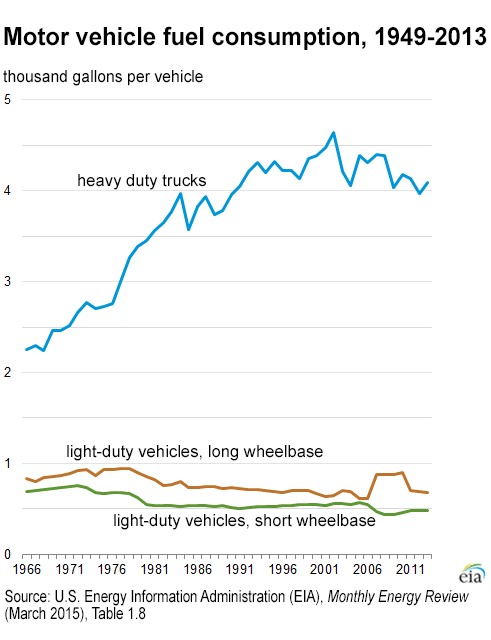The United States is a nation on the move. About 28% of all the energy that people in the United States consume goes to transporting people and goods from one place to another.
Different types of energy sources (or fuels) are used for transportation in the United States
- Petroleum products: made from crude oil and liquids from natural gas processing including gasoline, diesel fuel, jet fuel, residual fuel oil, and propane
- Biofuels: ethanol and biodiesel
- Natural gas
- Electricity (produced from many different energy sources)
Energy sources are used in several major ways
- Gasoline is used in cars, motorcycles, light trucks, and boats. Aviation gasoline is used in many types of airplanes.
- Diesel fuel (or distillate fuel) is used mainly by trucks, buses, and trains, and in boats and ships.
- Kerosene is used in jet airplanes and some types of helicopters.
- Residual fuel oil is used in ships.
- Biofuels are added to gasoline and diesel fuel.
- Natural gas is used as compressed natural gas and liquefied natural gas in cars, buses, and trucks. Most of the vehicles that use natural gas are in government and private vehicle fleets.
- Natural gas is also used to operate compressors to move natural gas in pipelines.
- Propane (a hydrocarbon gas liquid) is used in cars, buses, and trucks. Most of the vehicles that use propane are in government and private vehicle fleets.
- Electricity is used by public mass transit systems and by electric vehicles.
Petroleum is the main source of energy for transportation
In 2015, petroleum products provided about 92% of the total energy the U.S. transportation sector used. Biofuels, such as ethanol and biodiesel, contributed about 5% of the total energy the transportation sector used, and natural gas contributed about 3%. Electricity provided less than 1% of the total energy used.
Gasoline is the most commonly used U.S. transportation fuel
Gasoline is the dominant transportation fuel in the United States. Gasoline (excluding fuel ethanol) accounted for 56% of total U.S. transportation energy use in 2015. When the ethanol that is blended with petroleum gasoline to make finished motor gasoline is included in the percentage share, gasoline's share goes up to about 60% of total transportation energy use in 2015. Gasoline (including fuel ethanol) consumption for transportation averaged about 9 million barrels (379 million gallons) per day. (About 6 million gallons per day of gasoline were consumed for uses other than for transportation.)
Biofuels are added to petroleum fuels
Ethanol and biodiesel were actually some of the first fuels used in automobiles, but they were replaced by gasoline and diesel fuel. Today, most of the biofuels used in vehicles are added to gasoline and diesel fuel. Government incentives and mandates contributed to large increases in the use of biofuels in the United States over the past several decades. The amount of fuel ethanol added to motor gasoline consumed for transportation went from about 1 billion gallons in 1995 to about 14 billion gallons in 2015. Biodiesel consumption increased from 10 million gallons in 2001 to about 1.5 billion gallons in 2015.







